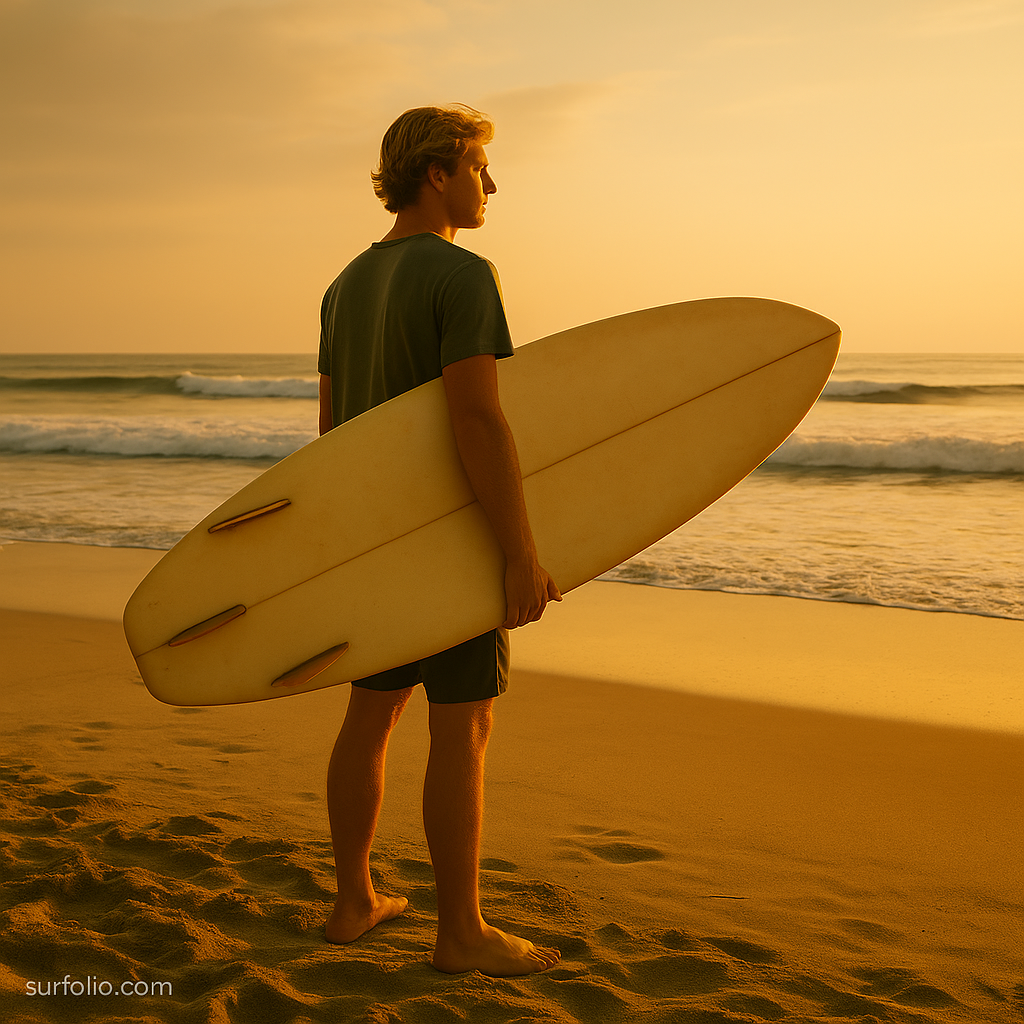
Small waves might not look impressive, but they’re some of the best teachers in surfing. They challenge your technique, balance, and board choice — all while keeping the vibe fun and low-stakes. The secret to unlocking the best small-wave sessions? Riding the right surfboard.
Choosing a board for small waves isn’t just about size — it’s about buoyancy, rocker, volume, and the way all those elements interact with weaker surf. Here’s how to choose the perfect board that turns mellow days into memorable rides.
Understanding Small-Wave Conditions
Before choosing your board, it helps to understand what defines “small waves.”
- Wave height: Usually knee- to chest-high.
- Energy: Softer and slower, often lacking steep faces.
- Takeoff zone: Closer to shore, with less push from the wave.
Small waves don’t generate as much speed naturally, so your board has to create its own momentum through glide and paddling power. That’s where board design makes all the difference.
The Key Elements of a Great Small-Wave Board
1. Volume is Your Best Friend
Volume equals float — and float equals fun in small surf.
Boards with more volume paddle faster, catch waves earlier, and maintain glide in weak conditions.
Guideline:
- Add at least 10–15% more volume than your typical everyday board.
- Aim for a board that floats you comfortably even when paddling slowly.
Extra foam is your ally, not your enemy, in smaller surf.
2. Go Shorter, but Wider
Shorter boards are easier to maneuver, but in small waves, you’ll want more width and surface area to help generate speed.
Ideal shape traits:
- Short and stubby outline — keeps the board playful and fast.
- Wide nose and tail — adds lift and stability.
- Rounded or squash tail — enhances flow and control through flat sections.
Popular examples: Mini Simmons, Fish, Groveler.
These boards plane easily, even when the wave barely has energy.
3. Keep the Rocker Low
Rocker refers to the curve of the board from nose to tail. Too much rocker slows you down on flatter waves.
For small surf, go with a low to moderate rocker — this maximizes glide and keeps you moving across softer faces.
Bonus tip: A flatter rocker doesn’t just help you go faster — it also makes paddling easier and reduces fatigue on long summer sessions.
4. Choose the Right Tail Shape
Tail design affects how water releases off the board — and how easily you can generate or maintain speed.
Best small-wave tail shapes:
- Squash tail: All-around favorite; blends lift and maneuverability.
- Swallow tail: Adds bite and control for sharper turns.
- Rounded tail: Smoother transitions and flow.
Avoid narrow pin tails, which are built for control in steep, powerful waves — not small, mushy ones.
5. Fins: Fewer, Larger, and More Drive
Fins create lift and stability, but they also add drag. In small waves, you want efficiency.
Recommendations:
- Twin fin: Fast, playful, and loose — perfect for generating your own speed.
- Thruster (3-fin): More control and hold if the waves have some push.
- Quad: Adds extra drive and stability on fast, weak waves.
Experiment to see what setup gives you the best mix of flow and responsiveness.
Board Types That Excel in Small Waves
1. The Fish
A classic for a reason — the fish thrives in small, punchy surf. With its short, wide outline and twin-fin setup, it glides effortlessly and turns smoothly on open faces.
Best for: Surfers who want fast, carving fun in small, clean conditions.
2. The Groveler
Think of the groveler as your small-wave performance board. It’s compact, thick, and built to plane across weak sections with speed.
Key traits:
- Extra foam under the chest.
- Flat rocker for glide.
- Wide nose and tail for stability.
Best for: Intermediate to advanced surfers wanting a lively shortboard feel when the surf is slow.
3. The Mini Mal (Funboard)
For beginners or anyone wanting an easy paddle, the mini mal delivers. Its longer length and higher volume make it ideal for catching waves early and riding them smoothly.
Best for: Beginners to intermediates transitioning into smaller surf days.
4. The Soft-Top Surfboard
Light, buoyant, and forgiving — soft-tops are perfect for casual summer sessions or learning in crumbly surf.
Best for: Beginners or family-friendly beach days where falling is part of the fun.
5. The Longboard
If the waves are tiny but clean, longboards rule the lineup. With their extended length and trim lines, they turn ankle-high waves into endless rides.
Best for: Surfers who love cruising, cross-stepping, and flow.
Pro Tips for Small-Wave Success
- Find the peak early. Paddle wider and angle your board toward the open face.
- Stay light on your feet. Don’t stomp on the tail — glide instead of forcing it.
- Pump gently. Use smooth weight shifts to maintain speed.
- Stay low and centered. A compact stance helps maintain balance through slower sections.
- Have fun with it. Small waves reward creativity — play with turns, trims, and new lines.
Recommended Dimensions (as a Starting Point)
| Skill Level | Board Type | Length | Volume Range |
|---|---|---|---|
| Beginner | Funboard or Soft-Top | 7’0″–8’0″ | 50–60 L |
| Intermediate | Fish or Groveler | 5’6″–6’2″ | 35–45 L |
| Advanced | Short Fish or Groveler | 5’4″–5’10” | 28–38 L |
Final Thoughts
Small waves don’t mean small fun. With the right board, even mellow days can deliver smooth glides, playful turns, and pure joy.
The goal isn’t to overpower the wave — it’s to work with it. A well-matched board lets you draw flowy lines, practice technique, and rediscover the simple pleasure of movement on water.
So the next time the forecast calls for waist-high peelers, grab your small-wave board and head out — you’ll be surprised how much magic you can find in modest surf.
